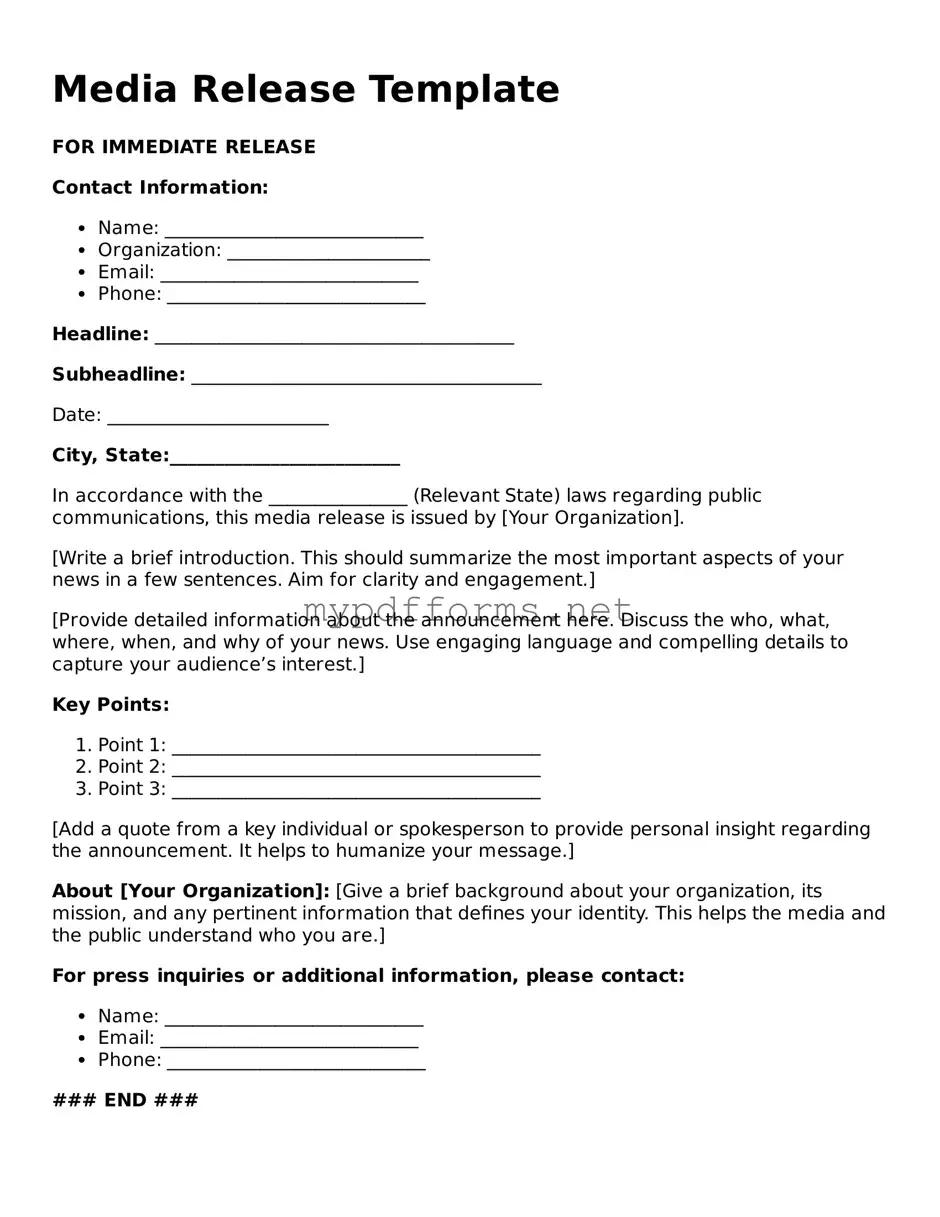In today's digital landscape, where sharing information is as easy as a click, the Media Release form plays a crucial role in protecting the rights and privacy of individuals while allowing organizations to share content freely. This form is essential for anyone looking to use images, videos, or personal stories in promotional materials, ensuring that consent is obtained from the individuals involved. Typically, it outlines the scope of usage, specifying how the media will be utilized, whether for marketing, educational purposes, or public relations. By signing this document, individuals grant permission for their likeness or story to be used, often without any financial compensation. It also serves to clarify the duration of the consent and any limitations that may apply. Understanding the nuances of the Media Release form is vital for both creators and participants, as it fosters transparency and trust in the relationship between the two parties. In an age where personal content can go viral in an instant, having a well-drafted Media Release form is not just a formality; it is a necessary step in navigating the complex intersection of creativity and consent.
